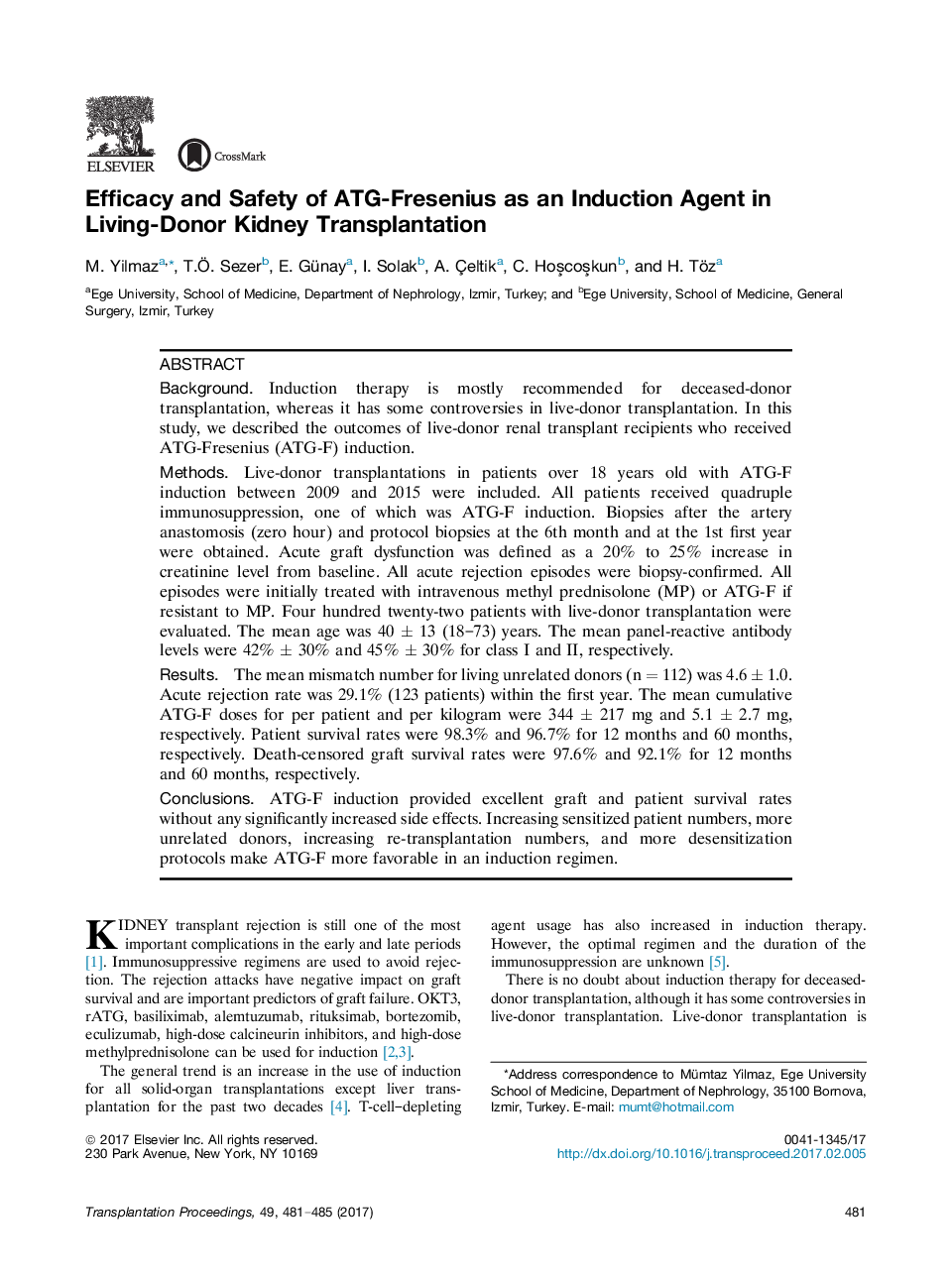| کد مقاله | کد نشریه | سال انتشار | مقاله انگلیسی | نسخه تمام متن |
|---|---|---|---|---|
| 5728860 | 1411672 | 2017 | 5 صفحه PDF | دانلود رایگان |

BackgroundInduction therapy is mostly recommended for deceased-donor transplantation, whereas it has some controversies in live-donor transplantation. In this study, we described the outcomes of live-donor renal transplant recipients who received ATG-Fresenius (ATG-F) induction.MethodsLive-donor transplantations in patients over 18 years old with ATG-F induction between 2009 and 2015 were included. All patients received quadruple immunosuppression, one of which was ATG-F induction. Biopsies after the artery anastomosis (zero hour) and protocol biopsies at the 6th month and at the 1st first year were obtained. Acute graft dysfunction was defined as a 20% to 25% increase in creatinine level from baseline. All acute rejection episodes were biopsy-confirmed. All episodes were initially treated with intravenous methyl prednisolone (MP) or ATG-F if resistant to MP. Four hundred twenty-two patients with live-donor transplantation were evaluated. The mean age was 40 ± 13 (18-73) years. The mean panel-reactive antibody levels were 42% ± 30% and 45% ± 30% for class I and II, respectively.ResultsThe mean mismatch number for living unrelated donors (n = 112) was 4.6 ± 1.0. Acute rejection rate was 29.1% (123 patients) within the first year. The mean cumulative ATG-F doses for per patient and per kilogram were 344 ± 217 mg and 5.1 ± 2.7 mg, respectively. Patient survival rates were 98.3% and 96.7% for 12 months and 60 months, respectively. Death-censored graft survival rates were 97.6% and 92.1% for 12 months and 60 months, respectively.ConclusionsATG-F induction provided excellent graft and patient survival rates without any significantly increased side effects. Increasing sensitized patient numbers, more unrelated donors, increasing re-transplantation numbers, and more desensitization protocols make ATG-F more favorable in an induction regimen.
Journal: Transplantation Proceedings - Volume 49, Issue 3, April 2017, Pages 481-485